|
Books Should Be Free Loyal Books Free Public Domain Audiobooks & eBook Downloads |
|
|
Books Should Be Free Loyal Books Free Public Domain Audiobooks & eBook Downloads |
|
Top Authors |
|---|
|
Book type:
Sort by:
|
By: H Rider Haggard | |
|---|---|
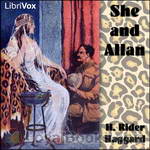 She and Allan
She and Allan
H Rider Haggard’s “She and Allan”, first published in 1921 is a gripping adventure about Allan Quatermain, who together with Hans, the Hottentot and, the Zulu-Chief Omslopogaas and at the bidding of the old Witch Doctor Zikali seeks out Ayesha, the daughter of Isis to find answers to their questions about life and death, and their many, sometimes strange, Adventures on their way. Written by Lars Rolander | |
By: Eleanor M. Ingram (1886-1921) | |
|---|---|
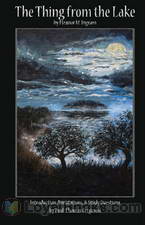 The Thing from the Lake
The Thing from the Lake
To get away from city life periodically, New Yorker Roger Locke purchases an abandoned farm house in rural Connecticut, and with the assistance of his cousin Phillida and her beau Ethan Vere, he sets about fixing up the place. Immediately however, an unseen mysterious woman begins giving him warnings during nocturnal visits to leave the house at once. Soon he begins hearing strange ominous sounds emanating from the tiny lake at the back of the house coupled with a permeation of sickly odors. An evil presence then begins to visit him during the witching hours of the late night, challenging him to a battle of wits from which there can be only one victor... | |
By: Laura Rountree Smith (1876-1924) | |
|---|---|
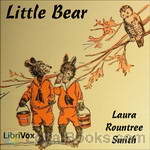 Little Bear
Little Bear
A story for children about a little bear with no name, “there were not enough names to go round,” and his adventures in finding one. | |
By: Josephus | |
|---|---|
 The Wars of the Jews
The Wars of the Jews
The Wars of the Jews (or The History of the Destruction of Jerusalem, or as it usually appears in modern English translations, The Jewish War – original title: Phlauiou Iôsêpou historia Ioudaïkou polemou pros Rhômaious bibliona) is a book written by the 1st century Jewish historian Josephus. It is a description of Jewish history from the capture of Jerusalem by the Seleucid ruler Antiochus IV Epiphanes in 164 BC to the fall and destruction of Jerusalem in the First Jewish-Roman War in AD 70... | |
By: Abraham Merritt | |
|---|---|
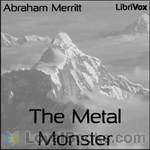 The Metal Monster
The Metal Monster
The Metal Monster is an Abraham Merritt fantasy novel.Dr. Goodwin is on a botanical expedition in the Himalayas. There hemeets Dick Drake, the son of one of his old science acquaintances. They are witnesses of a strange aurora-like effect, but seemingly a deliberate one. As they go out to investigate, they meet Goodwin’s old friends Martin and Ruth Ventnor, brother and sister scientists. The two are besieged by Persians as Darius III led when Alexander of Macedon conquered them more than two thousand years ago.(Wikipedia) | |
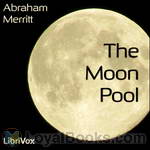 The Moon Pool
The Moon Pool
Dr. David Throckmartin’s scientific expedition to the South Sea Islands discovers among ancient ruins a portal into Muria, an unknown underground world. After the disappearance of Throckmartin, his wife and two companions, his old friend Dr. Walter Goodwin enters Muria with a rescue party, only to confront an fantastic world filled with incredible beings, astounding scientific advances, and the worship of the most evil of all creatures, The Dweller. (Introduction by Mark Nelson) | |
By: Grant Allen | |
|---|---|
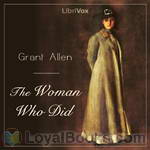 The Woman Who Did
The Woman Who Did
Most times, especially in the time when this book was written (1895), it is just as nature and society would wish: a man and woman “fall in love” and get married. But it is not so for Herminia Barton and Alan Merrick. They do indeed fall in love, but Herminia has a deeply held belief in freedom for women, and she holds immutable views against what she perceives as the slavery of marriage.Alan unwillingly agrees to her strong wish to remain unmarried and to live together as “close and dear friends”... | |
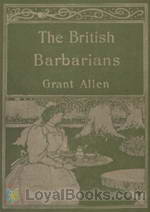 The British Barbarians
The British Barbarians
After Civil Servant Philip Christy crosses paths with the mysterious Bertram Ingledew in the respectable suburb of Brackenhurst, Philip and his sister Frida, married to the wealthy Scot Robert Monteith, become friends with the stranger. Bertram has some unconventional concepts about society, and as the story unfolds, his beliefs and actions cause much disruption in the family and the neighbourhood.Who is Bertram? Where does he come from? Allen explores some interesting ideas about society, some of which are curiously relevant today... | |
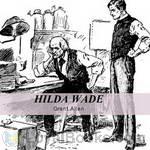 Hilda Wade, A Woman With Tenacity of Purpose
Hilda Wade, A Woman With Tenacity of Purpose
In this early detective novel, the detective is Hilda Wade. She is a very capable nurse, but there is something mysterious about her from the moment she arrives at the hospital. Upon meeting her, Dr. Hubert Cumberledge greatly admires her and becomes a devoted friend. It turns out that Hilda has one purpose in life, and in pursuit of that purpose she will travel across the world, from London to South Africa, Rhodesia, India, Nepaul, Tibet and back. With Cumberledge's support, her extraordinary logic and clear thinking lead her on through deadly perils. But will that be enough to accomplish the secret purpose which has driven her so long and so far? | |
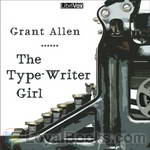 The Type-Writer Girl
The Type-Writer Girl
“There is no more pathetic figure in our world to-day than the common figure of the poor young lady, crushed between classes above and below, and left with scarce a chance of earning her bread with decency.” So says Juliet Appleton’s boss, encouraging her to put her story into print. How will this college-educated 23-year-old survive the Darwinian Battle of Life in late Victorian England? She’s fundless in London but armed, by way of adaptive structures, with those two high-tech devices of the day: a bicycle for mobility and a typewriter for utility. | |
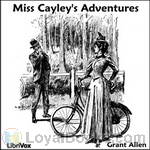 Miss Cayley's Adventures
Miss Cayley's Adventures
Fun stories of Miss Lois Cayley, independent young woman, as she, beginning with only twopence in her pocket, travels the world. | |
By: G. K. Chesterton (1874-1936) | |
|---|---|
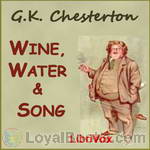 Wine, Water and Song
Wine, Water and Song
A collection of 16 poems by G.K. Chesterton. All of the poems in this book, except for "The Strange Ascetic" are taken from "The Flying Inn", a book by the same author. | |
 Magic: A Fantastic Comedy
Magic: A Fantastic Comedy
| |
 Wild Knight and Other Poems
Wild Knight and Other Poems
A collection of poems that tend to revolve around the theme of the wonder of the world. It includes the short, poetic play, "The Wild Knight". | |
 Greybeards at Play
Greybeards at Play
G.K. Chesterton's first publication, "Greybeards at Play" is a collection of poetry and accompanying illustrations. The work is marked by the irreverent whimsy and ancient delight that would eventually be recognized as Chesterton's signature style. Short (only four poems long and a dedication), playful, and with a touch of awe, Chesterton's first piece (written at 26) is appropriately titled: it is the work of an amateur, mature in his spirit, young in his play. - | |
By: Florence Scovel Shinn (1871-1940) | |
|---|---|
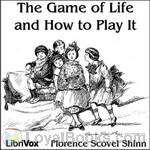 The Game of Life and How to Play It
The Game of Life and How to Play It
Florence Scovel Shinn, an illustrator living in New York City, became a teacher of New Thought after a divorce. New Thought was a movement which holds the belief that individuals can create their own reality through intentional thoughts and prayer, much like the current Law of Attraction movement. The Game of Life and How to Play It is her first book, and is remarkable for being written by a woman and meant for a genteel female audience. | |
By: Benvenuto Cellini ((1500-1571)) | |
|---|---|
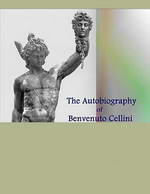 The Autobiography of Benvenuto Cellini
The Autobiography of Benvenuto Cellini
Cellini’s autobiographical memoirs, which he began writing in Florence in 1558, give a detailed account of his singular career, as well as his loves, hatreds, passions, and delights, written in an energetic, direct, and racy style. They show a great self-regard and self-assertion, sometimes running into extravagances which are impossible to credit. He even writes in a complacent way of how he contemplated his murders before carrying them out. He writes of his time in Paris: Parts of his tale recount... | |
By: William H. Hudson (1841-1922) | |
|---|---|
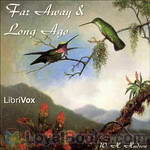 Far Away and Long Ago
Far Away and Long Ago
William Henry Hudson (August 1841 – 1922) was an author, naturalist and ornithologist. Hudson was born of U.S. parents living in the Quilmes Partido in Buenos Aires Province, Argentina, where he spent his youth studying the local flora and fauna and observing both natural and human dramas on what was then a lawless frontier. ‘Far Away and Long Ago’ is a classic memoir of a boy, fascinated by nature, on the Pampas in the 19th century. | |
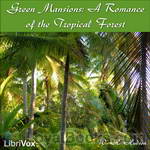 Green Mansions: A Romance of the Tropical Forest
Green Mansions: A Romance of the Tropical Forest
“Green Mansions: A Romance of the Tropical Forest” is a narration of his life story by Abel, a Venezuelan, to a comrade. Once a wealthy young man, he meddled in politics to the extent of provoking a revolution… which failed.Escaping into the tropical forests of Guyana Abel takes up gold hunting, then journal-writing, and fails at both. Now with no aim for his life, he drifts until he takes up residence with a remote Indian tribe. Soon he learns of a wood the Indians avoid, as it is inhabited by a dangerous Daughter of the Didi, who, they say, slew one of them with magic... | |
By: W. M. Flinders Petrie | |
|---|---|
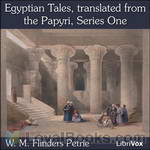 Egyptian Tales, translated from the Papyri, Series One
Egyptian Tales, translated from the Papyri, Series One
Brief, and in some cases incomplete, stories of magic from ancient Egypt. | |
By: Rupert Brooke | |
|---|---|
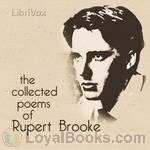 Collected Poems of Rupert Brooke
Collected Poems of Rupert Brooke
Rupert Chawner Brooke (August 3, 1887 – April 23, 1915) was an English poet known for his idealistic War Sonnets written during the First World War (especially The Soldier), as well as for his poetry written outside of war, especially The Old Vicarage, Grantchester and The Great Lover. He was also known for his boyish good looks, which prompted the Irish poet William Butler Yeats to describe him as “the handsomest young man in England”. | |
By: Edward George Bulwer-Lytton (1803-1873) | |
|---|---|
 The Coming Race
The Coming Race
Edward George Earle Lytton Bulwer-Lytton, 1st Baron Lytton (1803-1873) was an English novelist, poet, playright, and politician. Lord Lytton was a florid, popular writer of his day, who coined such phrases as “the great unwashed”, “pursuit of the almighty dollar”, “the pen is mightier than the sword”, and the infamous incipit “It was a dark and stormy night.” Despite his popularity in his heyday, today his name is known as a byword for bad writing. San Jose State University holds... | |
By: Samuel Cheetham | |
|---|---|
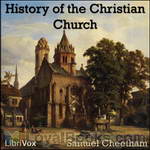 History of the Christian church
History of the Christian church
The intention of this work is to provide a sketch of the History of the Church in the first six centuries of its existence, resting throughout on original authorities, and also giving references to the principal modern works which have dealt specially with its several portions. It is hoped that it may be found to supply a convenient summary for those who can give but little time to the study, and also to serve as a guide for those who desire to make themselves acquainted with the principal documents from which the History is drawn. | |
By: Algernon Charles Swinburne (1837-1909) | |
|---|---|
 Century of Roundels
Century of Roundels
A roundel (not to be confused with the rondel) is a form of verse used in English language poetry devised by Algernon Charles Swinburne (1837–1909). It is a variation of the French rondeau form. It makes use of refrains, repeated according to a certain stylized pattern. A roundel consists of nine lines each having the same number of syllables, plus a refrain after the third line and after the last line. The refrain must be identical with the beginning of the first line: it may be a half-line, and rhymes with the second line... | |
By: Adele Garrison | |
|---|---|
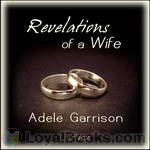 Revelations of a Wife
Revelations of a Wife
Adele Garrison was the nom de plume of Nana Springer White, an American writer. Her career included time as a schoolteacher in Milwaukee. She later worked as an editor for the Milwaukee Sentinel and then a reporter and writer for the Chicago Examiner and Chicago American. “Revelations of a Wife” ran as a serial story in her daily newspaper column in multiple American newspapers from 1915 until the Depression. It told the story of the marital ups and downs of Margaret “Madge” Graham, an independent-minded former schoolteacher, and her husband Dicky, an artist. At the height of the story’s popularity, it had one million regular readers. | |
By: Publius Ovidius Naso | |
|---|---|
 Metamorphoses
Metamorphoses
The Metamorphoses of Ovid is probably one of the best known, certainly one of the most influential works of the Ancient world. It consists of a narrative poem in fifteen books that describes the creation and history of the world through mythological tales, starting with a cosmogony and finishing with the deification of Julius Caesar. Published around 8 AD, the Metamorphoses are a source, sometimes the only source, for many of the most famous ancient myths, such as the stories of Daedalus and Icarus, Arachne or Narcisus... | |
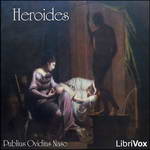 Heroides
Heroides
The Heroides, also known as the Heroines, the Letters of the Heroines or simply as Epistles are a very famous collection of poems by Ovid, not only for their interesting subject – letters by famous mythological characters addressed to their beloved ones – but also because it’s considered by some the first example of the Epistle as a literary genre – a statement made by Ovid himself in his Ars Amatoria. The book as we have it nowadays consists of 21 letters, divided in two parts. The first... | |
By: Herbert Spencer (1820-1903) | |
|---|---|
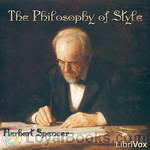 The Philosophy of Style
The Philosophy of Style
“The Philosophy of Style,” explored a growing trend of formalist approaches to writing. Highly focused on the proper placement and ordering of the parts of an English sentence, [Spencer] created a guide for effective composition. Spencer’s aim was to free prose writing from as much “friction and inertia” as possible, so that the reader would not be slowed by strenuous deliberations concerning the proper context and meaning of a sentence. | |
By: Edith Œnone Somerville (1858-1949) | |
|---|---|
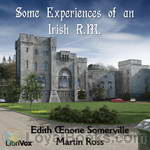 Some Experiences of an Irish R.M.
Some Experiences of an Irish R.M.
This is the first of three novels which Edith Somerville and her cousin Violet Martin wrote about the English Major Sinclair Yates who leaves the army to take up a position of Resident Magistrate in the West of Ireland in about 1895. The tales tell in a humorous way of his struggles with a new job, new culture, and with his landlord and neighbour Mr. ‘Flurry’ Knox whose prime, if not only, interest is in hunting, which forms the background to all the stories. Miss Somerville was herself the first woman anywhere to become an M.F.H. | |
By: Mary MacLane (1881-1929) | |
|---|---|
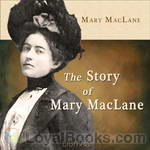 The Story of Mary MacLane
The Story of Mary MacLane
At the age of 19 in 1902, MacLane published her first book, The Story of Mary MacLane. It sold 100,000 copies in the first month and was popular among young girls, but was strongly criticized by conservative readers, and lightly ridiculed by H. L. Mencken. She had always chafed at living in Butte, which was a small mining town, and used the money from sales of this book to move to Greenwich Village where she continued to write books and newspaper articles. Some critics have suggested that even by today’s standards, MacLane’s writing is raw, honest, unflinching, self-aware, sensual and extreme... | |
By: Charlotte Perkins Gilman (1860-1935) | |
|---|---|
 Herland
Herland
Herland is a utopian novel from 1915, written by feminist Charlotte Perkins Gilman. The book describes an isolated society comprised entirely of Aryan women who reproduce via parthenogenesis (asexual reproduction). The result is an ideal social order, free of war, conflict and domination. It first appeared as a serial in Perkin’s monthly magazine Forerunner. | |
 What Diantha Did
What Diantha Did
Charlotte Perkins Gilman opens a window of history through which we see a small part of the determined efforts made by women to elevate the circumstances of women in the early 20th century.Diantha Bell is a normal young woman desiring marriage and a home, but also she desires a challenging career in new territory that raises many eyebrows and sets malicious tongues wagging. Her effort to elevate housework and cooking to a regulated and even a scientific business, for the relief of homemakers, is a depiction of the late 19th century movement to promote Domestic Science, or Home Economics, as a means of providing more healthful home life, as well as career paths for women... | |